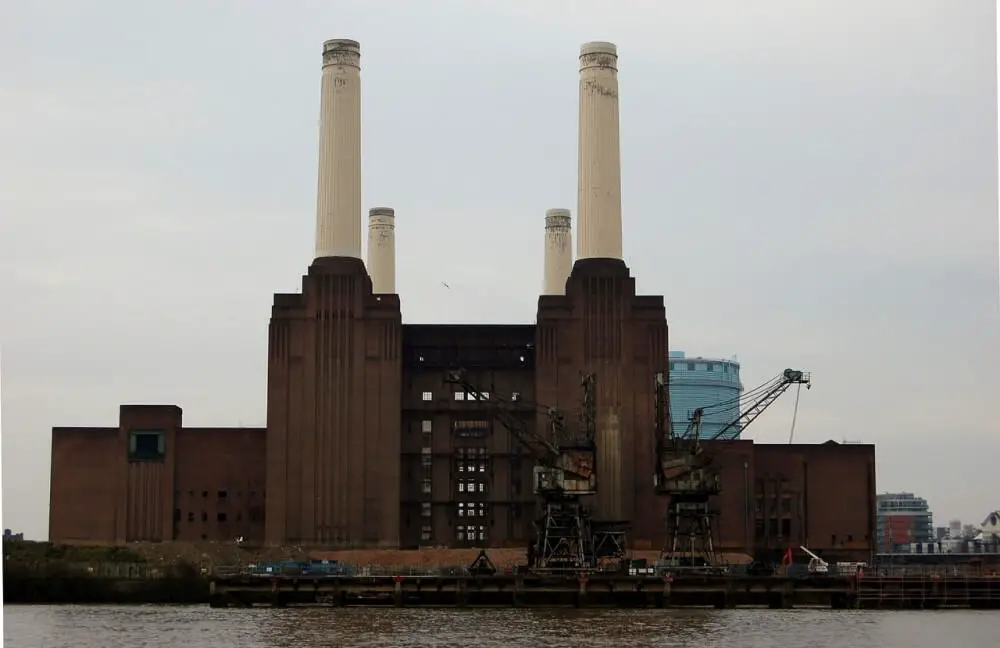Since it first opened its doors in the 1950s, Battersea Power Station has been one of London’s most iconic structures. With unique structural features galore, it’s truly a testament to architectural ingenuity.
But there’s more to Battersea Power Station than meets the eye. As well as the elements that make the building what it is, it’s also got a fascinating history and equally intriguing future.
So, join us as we probe 25+ amazing facts about Battersea Power Station, packed with all the information you need to know about this magnificent brick building.
Explore our related articles:
Top 20 White Elephant Construction Projects Around the World10+ Amazing L Shaped Buildings from Around the World
What is the Tallest Building We Could Build?
Would it be Possible to Build the Pyramids Today?
Which Current Buildings will Last the Longest?
Top 15+ Longest Buildings in the World
Why is a Building Called a Building if it's Already Built?
1. It was built as a coal-fired power station
In order to provide power to London’s rapidly growing population and industrial requirements, Battersea Power Station was built to burn coal and turn it into power.
It was built by the London Power Company (LPC), which was formed in 1925 following the merger of ten separate electricity companies.
2. It is made up of two near-identical buildings
The power station is made up of two parallel buildings that have almost exactly the same specifications, each with two chimneys that stand 103 metres tall at both ends of the structures.
In between the two buildings, which were known as Battersea A Power Station and Battersea B Power Station, was the main Boiler House, which connects the two to this day.
3. It shares a creator with the red telephone box
Not content with designing the iconic red telephone boxes that the U.K. is known for, Sir Giles Gilbert Scott also helped to come up with the design for Battersea Power Station.
He was part of an extended team of architects and designers working on the structure, and was appointed largely to encourage positive public opinion, thanks to his previous work.
4. It was a truly powerful power station
At its peak, the power station’s four huge boilers had the power to produce 500,000 pounds of steam every hour, with a capacity of 400 megawatts.
This huge force meant that up to 3 million homes in the local area could be powered, making it one of the most high-powered stations in the world at the time.
5. It featured on the cover of an iconic album
Battersea Power Station was the cover subject of Pink Floyd’s renowned 1977 album Animals. The image featured an inflatable pig that was flown between the chimneys by the band’s entourage.
This plan almost ended in disaster, though, when the pig unintentionally split apart from its moorings and flew directly into Heathrow Airport’s flight path! Police helicopter ended up having to track the pig to its final resting place in the English channel.
6. It is a significant example of surviving art deco architecture
From an architectural standpoint, one of the most important aspects to Battersea Power Station is its heavy use of art deco features, most of which survive to this day.
This is especially true of its famous control room, whose semi-circular design, complete with a teak parquet floor and gold-painted ceiling, has been fully restored.
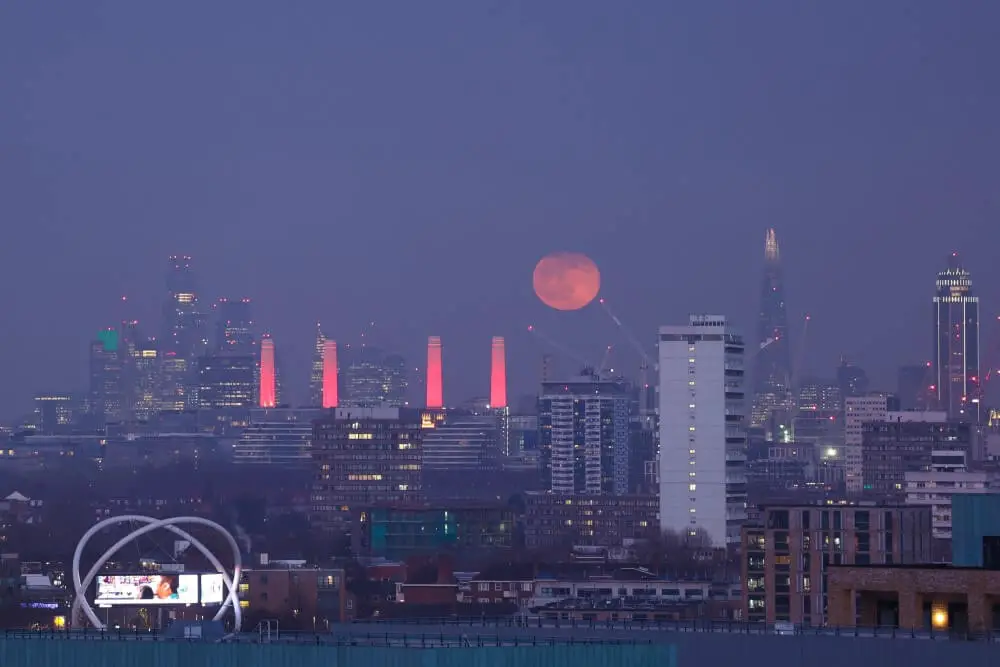
7. It caused the launch of BBC2 to be delayed
Talk about unfortunate timing; in 1964, the BBC was due to launch its new channel, BBC2, from its home at the BBC Television Centre.
However, a fire at Battersea Power Station that night meant that power went down across parts of Western London, including at the BBC’s home. So, the launch was delayed until the next morning instead.
8. It can’t be demolished by law
Since 1980, Battersea Power Station has been grade 2 listed, meaning that it is protected from full demolition by law.
It was listed due to its architectural significance and cultural heritage, as one of London’s most recognisable structures.
9. It took 26 years for construction to finish
Construction of the first power station, Battersea A, first began in 1929, and the second began in 1937, being completed in 1955.
The delay in construction between the two phases was done to reduce costs and resource requirements. Construction of Battersea B was affected by the onset of World War 2, which meant manpower and money could not be allocated to the project.
10. Part of its interior design resembles a ship
Although you may not think it, some interior design elements of Battersea Power Station closely resemble a ship.
One major example is the main control room, which features a compass and engine telegraphs, and has been noted by many observers to have an especially nautically-inspired design.
11. It aided WW2 pilots on both sides
As with many London landmarks, Battersea Power Station was a subject of attention from both pilots and defence planners during the Blitz.
However, the station was never bombed – instead, both the British and Germans used the plumes from the chimneys as a navigation aid. This meant that it escaped the worst of the bombing.
12. It was decommissioned almost 40 years ago
Despite at one point being one of London’s main power sources, Battersea Power Station became surplus to requirements and was closed down in 1983.
Among the reasons for its decommissioning were the rising costs it took to maintain its ageing apparatus, and its reduced watt capacity over time.
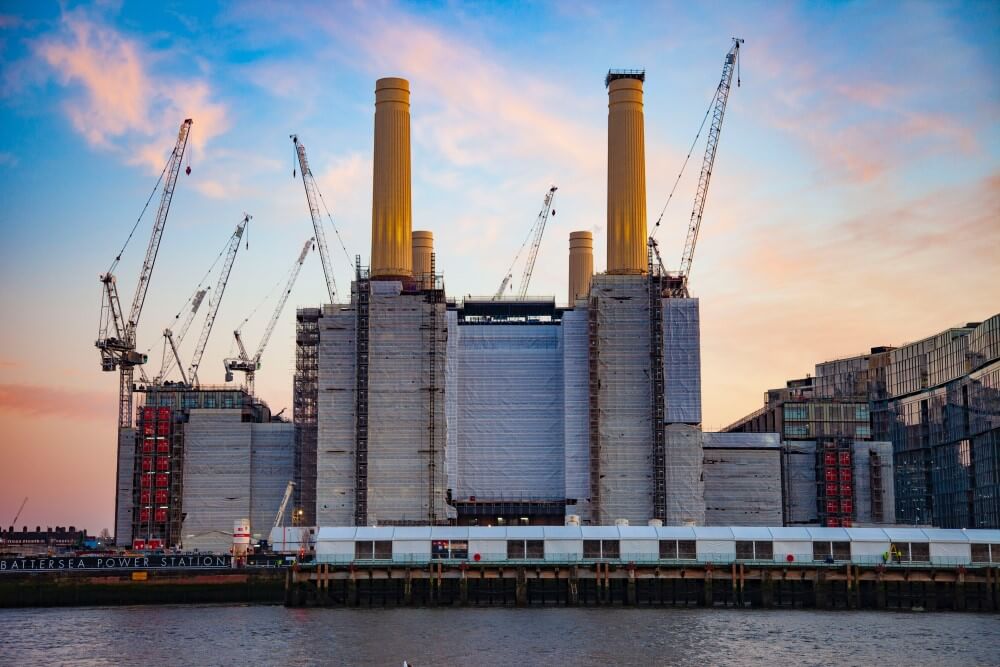
13. It has recently undergone massive redevelopment
Battersea Power Station has recently undergone a huge redevelopment project, aimed at converting the iconic structure into a mixed-use development with offices, shops, and apartments.
The redevelopment project, which also included works to the surrounding public realm and riverside, cost around £9 billion and completed in 2022.
14. It was Europe’s largest brick building upon completion
Over 6 million bricks were used in the construction of Battersea Power Station. At the time of opening, this made it Europe’s largest brick building.
The power station’s distinctive brick facade alone is made up of over 4 million bricks, with the station being constructed in the then-popular ‘brick cathedral’ style.
15. It employed an innovative emission reduction technique
When first operational, Battersea Power Station made use of a new method for cleaning flue gases, which involved using iron oxide catalysts to convert sulphur dioxide.
This was utilised as a way to reduce sulphur emissions until it was discovered that the by-products from this method were more damaging than the emissions it reduced.
16. One of its most iconic features has recently been demolished
After the closure of the plant in 1983, the iconic four chimneys of the structure went into a state of disrepair.
As a result of this, the four chimneys were replaced in 2015, and rebuilt using the same construction techniques. This took 680 tonnes of concrete!
17. The chimneys require a lot of paint
Whether new or old, the four chimneys of the Battersea Power Station need a staggering amount of paint in order to keep their polished white appearance.
In all, over 375 litres of paint are needed each year to prevent them from flaking or discolouring.
18. It has been used as a filming location
The power station has also been a star of the silver and small screen, featuring in a wide range of films, some of which include blockbusters like The King’s Speech and The Dark Knight.
It has also been used for various TV shows, with Doctor Who among the most famous to utilise the building for filming.
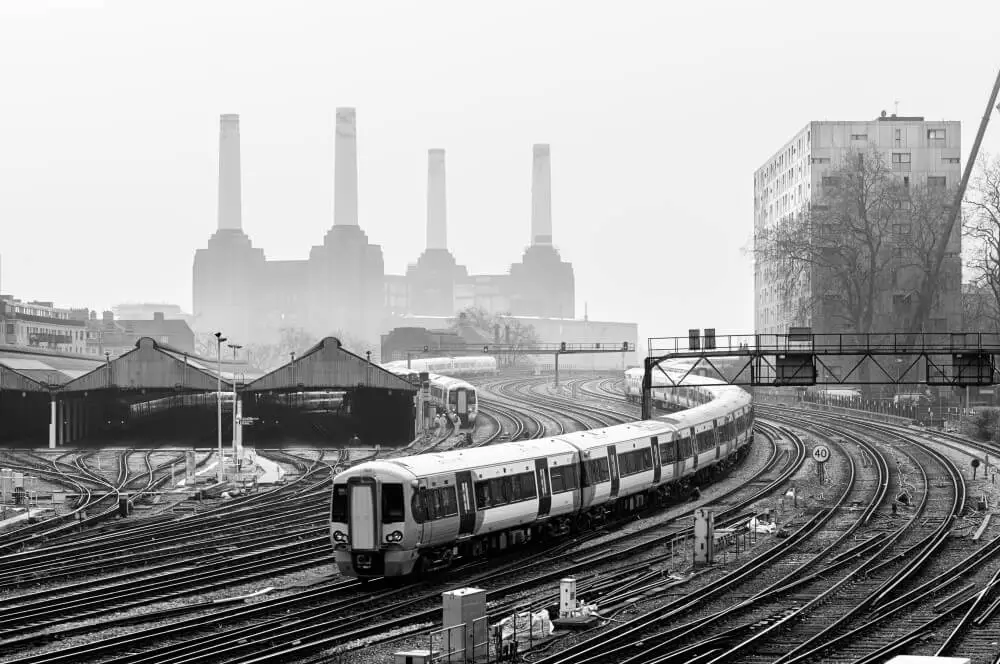
19. It was only supposed to last for 50 years
Like every building of its type, Battersea Power Station was not supposed to last for millennia, and had an expected shelf life of around only 50 years when it first opened.
Of course, the structure didn’t quite make it to this milestone, and was decommissioned only 28 years after its full completion. However, its listed status has meant that it has since had a new lease of life and has not been demolished.
20. Not everyone was happy with its construction
Although the structure was widely praised by architects and the general public alike for its impressive design at the time of its opening, the construction of Battersea Power Station had a lot of opposition, too.
The main qualms of the protesters chiefly concerned its environmental impact on the surrounding area, especially the likely spread of air pollution.
21. It only recently gained a nearby tube station
One recent development that has helped to make Battersea Power Station more accessible to the masses is the opening of the Battersea Power Station tube station.
The station, which opened its doors in September 2021, is a stop on the Northern Line, which was recently extended to the Battersea area. Interestingly, the new stop is the only tube station on the entire network to actually contain the name ‘Station’.
22. It has been known to attract thrill seekers
Over recent years, Battersea Power Station has become something of a target for thrill seekers in the capital of England.
Numerous urban explorers have attracted headlines for managing to evade security and scale the structure, especially over the course of its redevelopment.
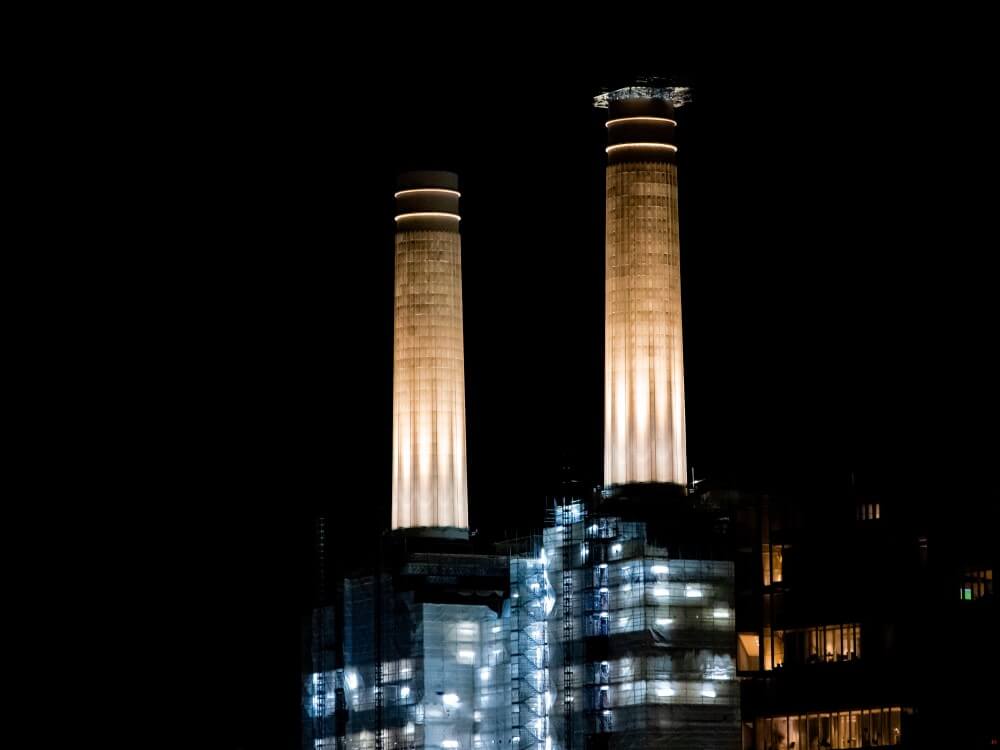
23. It could have been turned into a football stadium or theme park
Following its closing, there were large-scale debates about what should be done with Battersea Power Station. Many ideas were floated about, with some more outlandish than others.
The station was even the subject of a bid to turn the power station into a theme park in the 1980s. This would have seen amusement rides built in and around the power station’s main buildings, using its iconic features as striking visual accompaniments.
24. It was partly demolished in the 1980s
It was because of these ambitious plans, and its decommissioning, that parts of Battersea Power Station were demolished in the 1980s. The theme park plan gained backing, and construction work began in November 1988 on the project.
While the theme park proposal eventually fell through due to spiralling costs, it was too late for the power station’s West Wall, which was demolished as part of the preparatory works.
25. It has become a host for numerous cultural events
Leveraging its position as one of London’s many spectacular structures, Battersea Power Station has hosted many cultural events in the last few decades following its closing.
From premieres and political rallies to light shows and art exhibitions, it has been centre stage on a wide variety of different occasions.
That’s it for our run down of 25+ interesting Battersea Power Station facts. We hope you have learned something new about one of London’s true architectural marvels.
For more related news, views and in-depth guides, explore more of our general building articles, featuring our assessment of whether construction workers work in the rain.
Or, if you’d like more guides to building and architecture vocabulary, take a look at our selection of building wikis, including our run-down of the definition of kop.
Last Updated on 13 May 2023 by Michael
